Refine search
Actions for selected content:
77 results
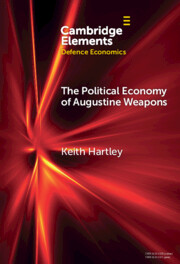
The Political Economy of Augustine Weapons
-
- Published online:
- 30 October 2025
- Print publication:
- 27 November 2025
-
- Element
- Export citation
2 - ‘That most imperfect military organization’
- from Part I - The Ascent
-
- Book:
- The Generalissimo
- Published online:
- 31 July 2025
- Print publication:
- 14 August 2025, pp 43-65
-
- Chapter
- Export citation
Russian counter-trade as a mechanism for promoting arms sales and diplomatic influence
-
- Journal:
- European Journal of International Security , First View
- Published online by Cambridge University Press:
- 30 July 2025, pp. 1-19
-
- Article
-
- You have access
- Open access
- HTML
- Export citation
Introduction
-
-
- Book:
- Mobilising the Australian Army
- Published online:
- 23 May 2025
- Print publication:
- 30 May 2025, pp 1-10
-
- Chapter
- Export citation
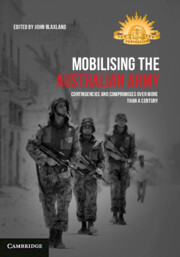
Mobilising the Australian Army
- Contingencies and Compromises Over More than a Century
-
- Published online:
- 23 May 2025
- Print publication:
- 30 May 2025
4 - Foreign and Defence Policy
-
-
- Book:
- The Conservative Effect, 2010–2024
- Published online:
- 24 July 2024
- Print publication:
- 27 June 2024, pp 102-130
-
- Chapter
- Export citation
14 - Defence and Security
-
-
- Book:
- Australia in World Affairs 2006–2010
- Published online:
- 04 May 2024, pp 211-225
-
- Chapter
- Export citation
6 - Australia, Disarmament and Arms Control
-
-
- Book:
- Australia in World Affairs 1991–1995
- Published online:
- 04 May 2024, pp 56-67
-
- Chapter
- Export citation
9 - Security, Defence, and Terrorism
- from Part 3 - Issues
-
-
- Book:
- Australia in World Affairs 2001–2005
- Published online:
- 04 May 2024, pp 147-162
-
- Chapter
- Export citation
6 - Australia and Japan: Mobilising the Bilateral Relationship
-
-
- Book:
- Australia in World Affairs 2006–2010
- Published online:
- 04 May 2024, pp 82-95
-
- Chapter
- Export citation
2 - The Howard–Downer Legacy: Global Deputy, Regional Sheriff
-
-
- Book:
- Australia in World Affairs 2006–2010
- Published online:
- 04 May 2024, pp 11-26
-
- Chapter
- Export citation
3 - Balancing ‘Asia’ against Australian Values
- from Part I - Setting the Scene
-
-
- Book:
- Australia in World Affairs 1996–2000
- Published online:
- 04 May 2024, pp 23-36
-
- Chapter
- Export citation
11 - Facing an Uncertain Future: Defence and Security under the Howard Government
- from Part III - Issues
-
-
- Book:
- Australia in World Affairs 1996–2000
- Published online:
- 04 May 2024, pp 137-148
-
- Chapter
- Export citation
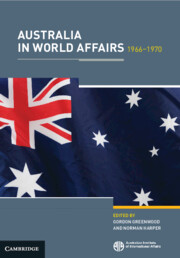
Australia in World Affairs 1966–1970
-
- Published online:
- 29 March 2024
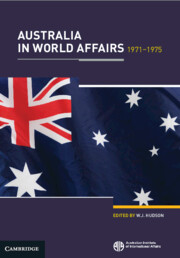
Australia in World Affairs 1971–1975
-
- Published online:
- 29 March 2024
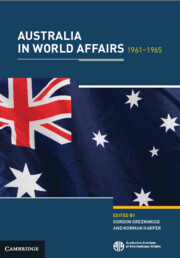
Australia in World Affairs 1961–1965
-
- Published online:
- 29 March 2024
V - Australian Defence, 1945–1965
-
- Book:
- Australia in World Affairs 1961–1965
- Published online:
- 29 March 2024, pp 251-312
-
- Chapter
- Export citation
9 - Australian Strategic and Defence Policies
- from Part Three - The Pacific and Asia
-
-
- Book:
- Australia in World Affairs 1966–1970
- Published online:
- 29 March 2024, pp 233-269
-
- Chapter
- Export citation
Burgi in the Loess Plain of the Lower Rhine Region in Late Antiquity
-
- Journal:
- European Journal of Archaeology / Volume 27 / Issue 1 / February 2024
- Published online by Cambridge University Press:
- 03 November 2023, pp. 47-66
-
- Article
- Export citation
Introduction
-
- Book:
- Good Soldiers Don't Rape
- Published online:
- 11 August 2023
- Print publication:
- 06 July 2023, pp 1-17
-
- Chapter
- Export citation
